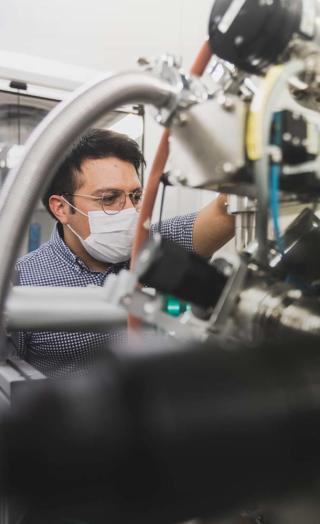Soils can play a major role in mitigating climate change, acting as a sink of CO2. At the same time, warmer weather, unsustainable land-use management, and low nutrient availability can change the role of soil from “hero” to “villain”, contributing to the increase of CO2. Nutrients like phosphorous are crucial for vegetation growth, which, in turn, could capture more CO2 from the atmosphere. However, many forests, like the Amazonas, are generally lacking of it. My main goal is to bring smart land management practices that will stabilize the carbon in the soil and quantify the ongoing changes in natural ecosystems.
After finishing my university degree in Brazil, I moved to the Technical University in Munich, where I did my Ph.D., focusing on soils of the German Alps. Part of it was focused on developing a way to study phosphorous and carbon in soils under cryogenic conditions with synchrotron X-rays. I would freeze the samples and then cut them and place them in a sample holder for cryo-imaging that we built. This would preserve the natural state of the elements and, therefore, offer a faithful picture of the real structure of the soil. I am now working on ID21, aiming to benefit from the new Extremely Brilliant Source and to apply this method to study soils from tropical and polar ecosystems, to get more insights into the carbon and nutrient dynamics in soils.

